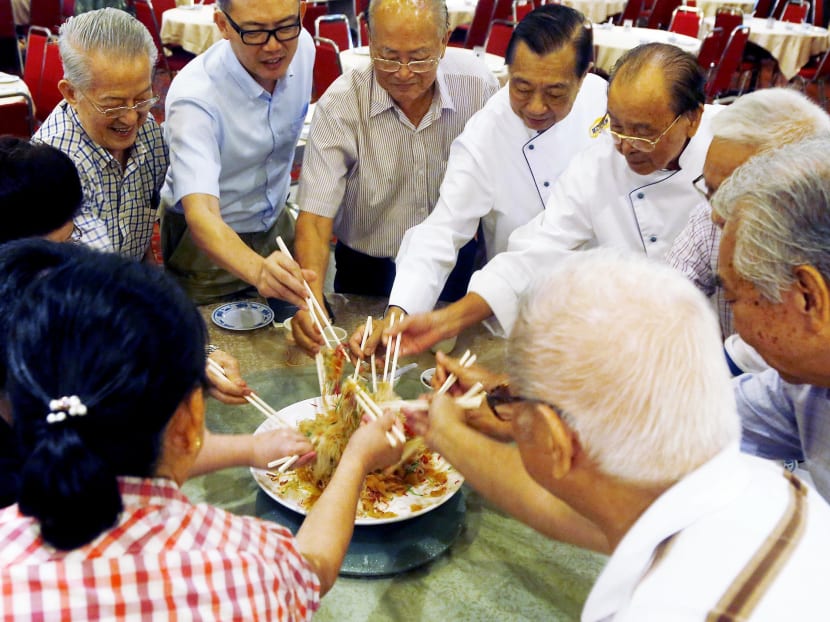Yusheng: From roadside fare to Chinese New Year must-have
SINGAPORE — “Yusheng” was a generic Mandarin name for any raw fish dish sold at roadside porridge stalls here as early as the 1960s.

A plate of yusheng containing abalone slices, instead of raw fish, being tossed at Red Star restaurant in Chin Swee Road. Photo: Raj Nadarajan/TODAY
SINGAPORE — “Yusheng” was a generic Mandarin name for any raw fish dish sold at roadside porridge stalls here as early as the 1960s.
Then, the dish was nothing like the kaleidoscopic sweet-and-savoury festive offering Singaporeans indulge in during Chinese New Year today.
Instead, hawkers served up a few ingredients with raw fish and patrons mixed their own concoction of vinegar, oil and sugar to go with.
The dish was introduced by fishermen from Guangdong province in China who had immigrated to Singapore. They ate the dish on the seventh day of Chinese New Year — known as “Human Day” in Chinese culture — for auspicious reasons, since the Cantonese pronunciation sounds like “rising abundance” or prosperity.
One evening in 1963, Chefs Sin Leong, Hooi Kok Wai and the late Tham Yui Kai and Lau Yeok Pui — all apprentices at the Cathay Restaurant then — were having the raw fish dish for supper when they set their minds on recreating the dish.
Recounting that fateful day, Chef Sin, 88, said the raw fish hung at the hawker stalls attracted houseflies and patrons were tucking in amid smoky and dusty conditions caused by motorists zipping by. The dish could be more hygienic and appealing visually, they decided.
So over the next three months or so, they experimented by adding over 20 ingredients, such as julienned radish and red and white ginger to give the dish a variegated look.
For smell and texture, they added items like candied orange peel and crushed peanuts and sesame seeds.
The dish is then topped off with fried dough crackers so there is a crackling sound when eaten, which could entice young children to give it a try.
Most importantly, they concocted a recipe for the sauce that could mask the taste of raw fish and gel the myriad ingredients together. Sometimes, they did taste-tests for several nights in a row.
The four “heavenly culinary kings’” version of yusheng debuted in 1964 and is now known well beyond Singapore.
The shouts of auspicious greetings when tossing the dish, commonly known as “lo hei”, evolved naturally from customers who were in a celebratory mood.






